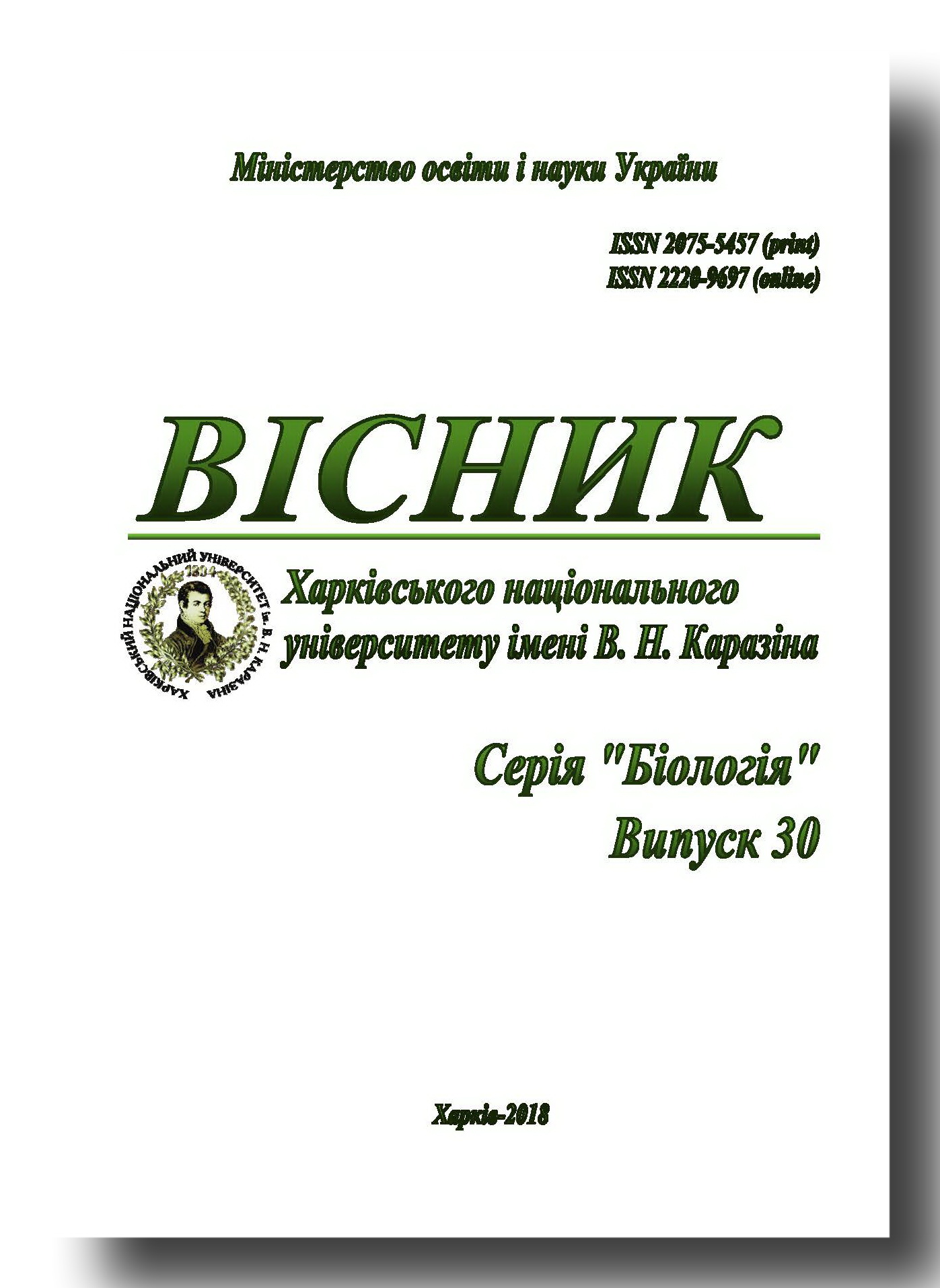Content of vitamine C metabolites in rats organs at acute blood loss
Abstract
There has been studied the effect of acute blood loss, which was modeled by a single loss of 30% of the circulating blood, on the fluctuations in the content of ascorbic (AA), dehydroascorbic (DAA), diketogulonic (DKGA) acid and their sum in the organs of rats in dynamics for the fifth, twelfth, nineteenth and twenty-sixth days after the blood loss. Acute blood loss caused a significant decrease in the content of all parameters of the system of metabolites of ascorbic acid – their sum, AA, DAA and DKGA – by 10–73 % compared to the control. The most significant decrease was in the content of AA, which was not restored in all organs until the end of the study period. The DAA content in all organs increased from the 12th day, and then decreased during the experiment. The content of the DKGA increased from the 19th day of the experiment. At the same time, it was found that on 26th day in the kidneys, the DAA content exceeded the control value by 42%, and the content of DKGA in the liver and blood – by 25–60 %. The content of the amount of ascorbic acid metabolites at the end of the experiment was almost restored, but this recovery occurred in various ways: in the kidneys – due to an increase in the DAA content, in other organs – by increasing the concentration of DKGA. The parts of AA from the sum of acids (in %) after blood loss significantly decreased, starting from the 5th day, and the process of its recovery began to occur only after the 19th day. The ratio of the amount of the vitamin component of the acids of the ascorbic acid system to the content of the non-vitamin DKGA was increased in the kidneys on the 12th and 26th days of the experiment, in other organs this index decreased 2.3–3.1 times in comparison with the control. The obtained data can be explained by the increased consumption of ascorbic acid to neutralize the effects of the intensification of oxidative processes under oxidative stress, which were activated by the action of acute blood loss, due to its reversible conversion to dehydroascorbic acid, and the latter irreversibly to diketogulonic acid.
Downloads
References
Гланц С. Медико-биологическая статистика. – М. : Практика, 1998. – 459с. /Glants S. Biomedical statistics. – Moscow: Praktika, 1998. – 459p./
Каркищенко Н.Н. Руководство по лабораторным животным и альтернативным моделям биомедицинских технологий. – М., 2010. – 344с. /Karkischenko N.N. Guide to laboratory animals and alternative models of biomedical technologies. – Moscow, 2010. – 344p./
Кудряшов А.М., Титова Н.М., Савченко А.А., Кудряшова Е.В. Содержание аскорбиновой кислоты и ее окисленных форм при старении эритроцитов, продуцированных в условиях нормального и напряженного эритропоэза // Биомедицинская химия. – 2005. – Т.51, вып. 1. – С. 53–59. /Kudryashov A.M., Titova N.M., Savchenko A.A., Kudryashova Ye.V. The content of ascorbic acid and its oxidized forms at the aging of red blood cells produced in conditions of normal and intense erythropoesis // Biomeditsinskaya khimiya. – 2005. – Vol. 51(1). – P. 53–59./
Смирнов В.В. Состояние активности окислительных ферментов при острой смертельной кровопотере // Матер. II-го Всеросс. съезда судебных медиков: тезисы докладов. – Иркутск-М., 1987. – С. 274–276. /Smirnov V.V. The state of activity of oxidative enzymes in acute fatal blood loss // Mater. II-st All-Russian congress of forensic doctors: abstracts of reports. – Irkutsk-M., 1987. – P. 274–276./
Соколовский В.В., Лебедева Л.В., Лиэлуп Т.В. О методе раздельного определения аскорбиновой, дегидроаскорбиновой и дикетогулоновой кислот в биологических тканях // Лабораторное дело. – 1974. – №3. – С. 160–162. /Sokolovsky V.V., Lebedeva L.V., Lielup T.V. A method of separate determining of ascorbic, dehydroascorbic and diketogulonic acids in biological tissues // Laboratornoe delo. – 1974. – No. 3. – P. 160–162./
Чернадчук С.С., Петров С.А., Будняк О.К., Рустамова А.О. Стан процесів вільнорадикального перекісного окиснення у щурів з гострою крововтратою // Scientific Journal «ScienceRise». – 2015. – No. 4/1(9). – С. 16–20. /Chernadchuk S.S., Petrov S.A., Budnyak O.K., Rustamova A.O. State of free-radical peroxidation processes in rats with acute blood loss // ScienceRise. – 2015. – No. 4/1(9). – P. 16–20./
Directive 2010/63/EU of the European parliament and of the council of 22 September 2010 on the protection of animals used for scientific purposes // Official Journal of the European Union L276/33. –86/609/EC.20.10.2010.
Petrov S., Budnyak O., Ozherelyeva K. et al. Ascorbic acid metabolism in the organism under the lack of oxygen supply to the tissues // Journal of Education, Health and Sport. – 2017. – No. 7(6). – S. 583–590.
Authors retain copyright of their work and grant the journal the right of its first publication under the terms of the Creative Commons Attribution License 4.0 International (CC BY 4.0), that allows others to share the work with an acknowledgement of the work's authorship.




